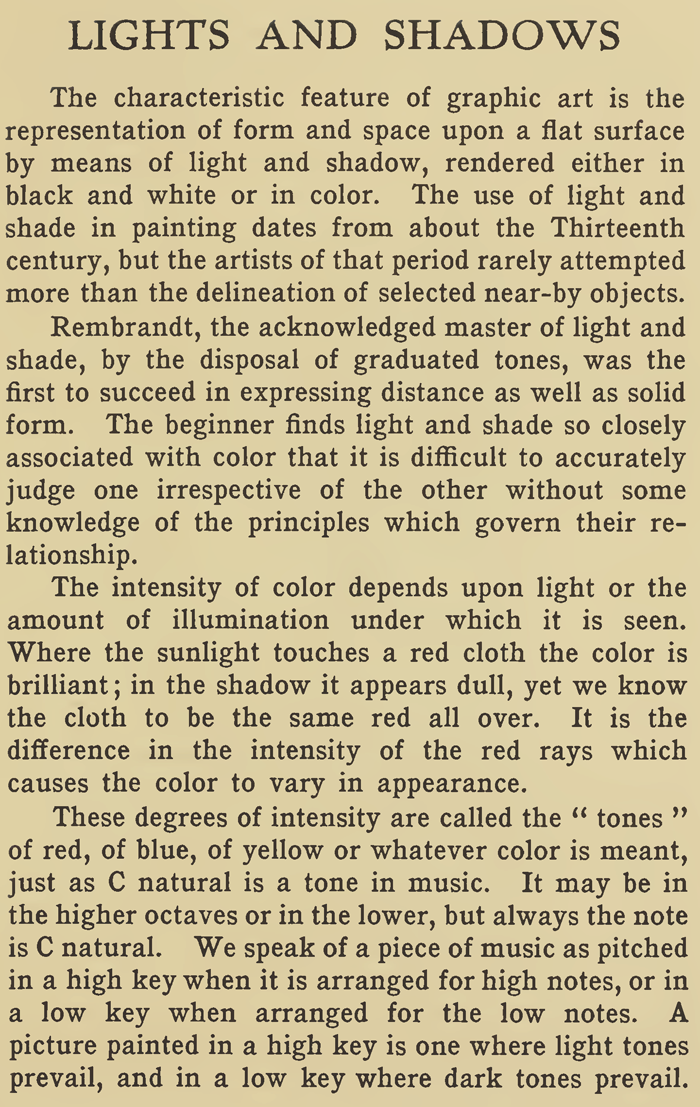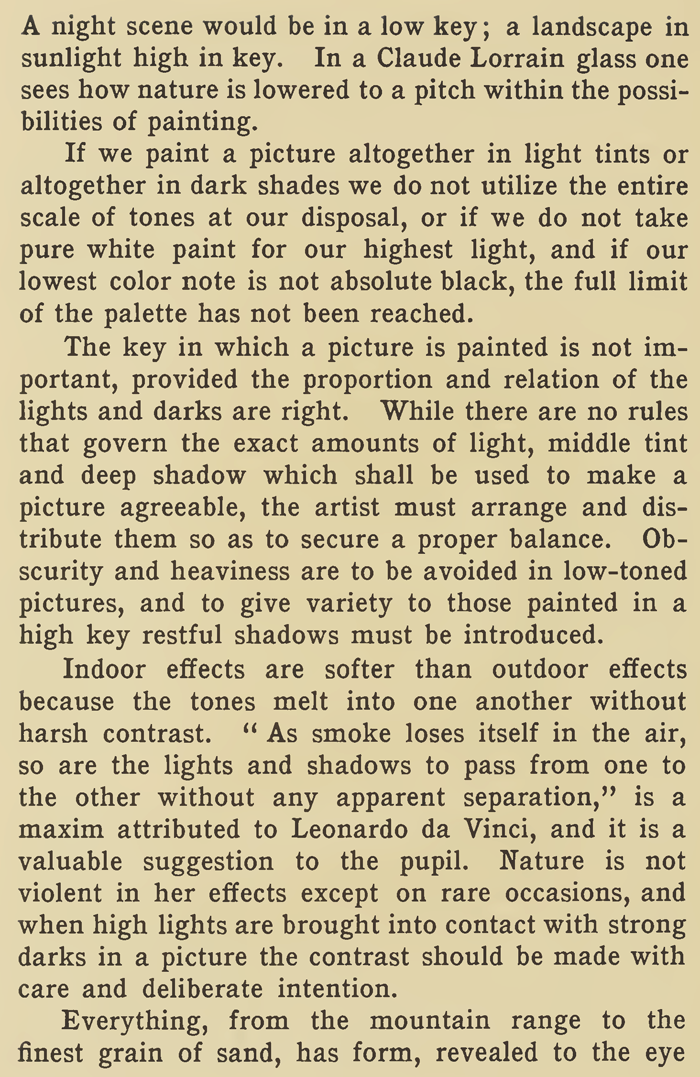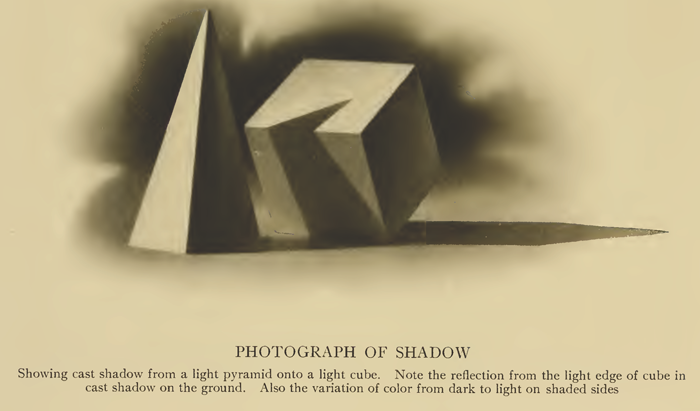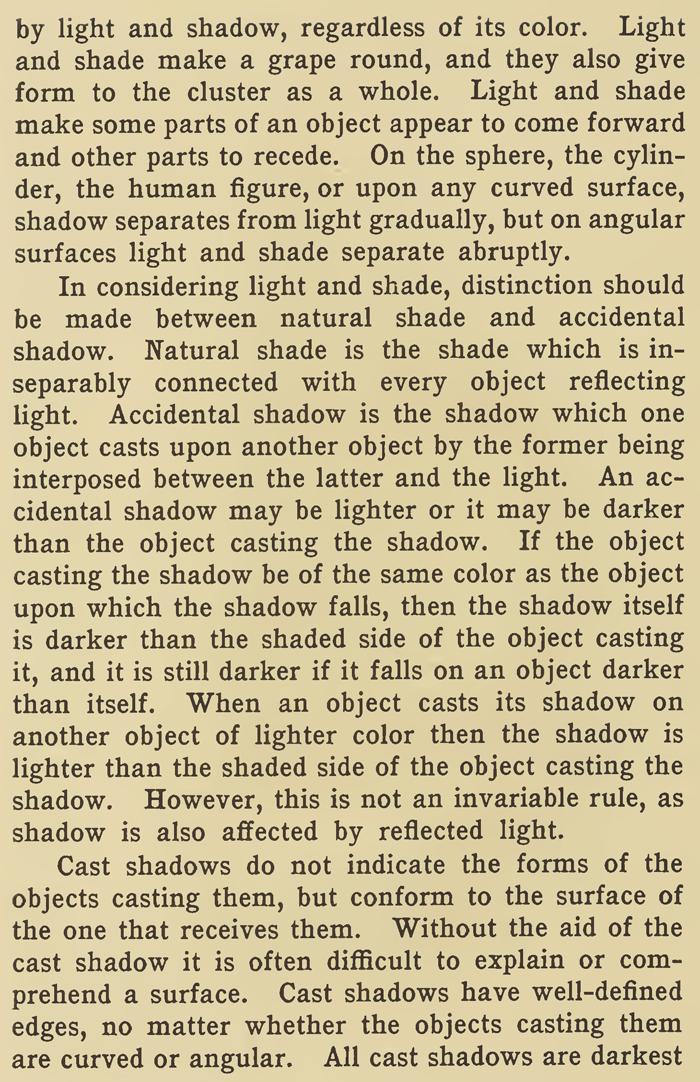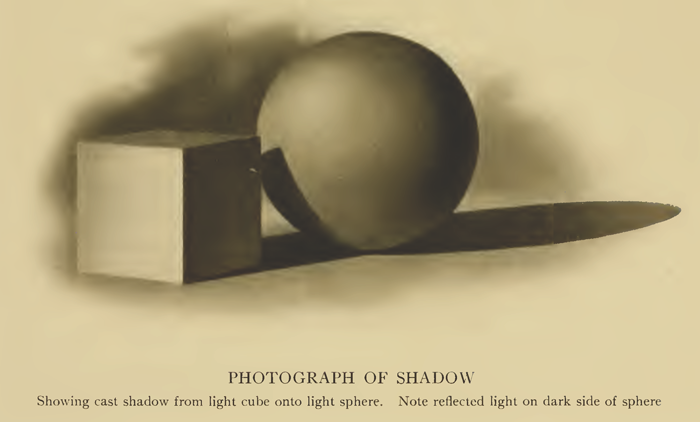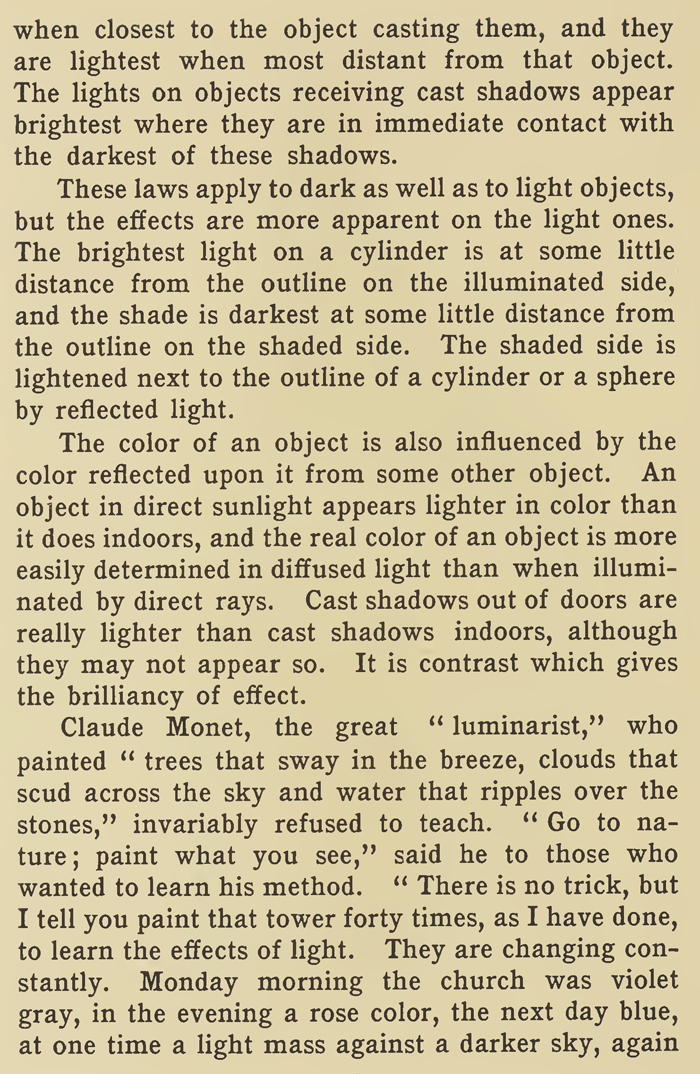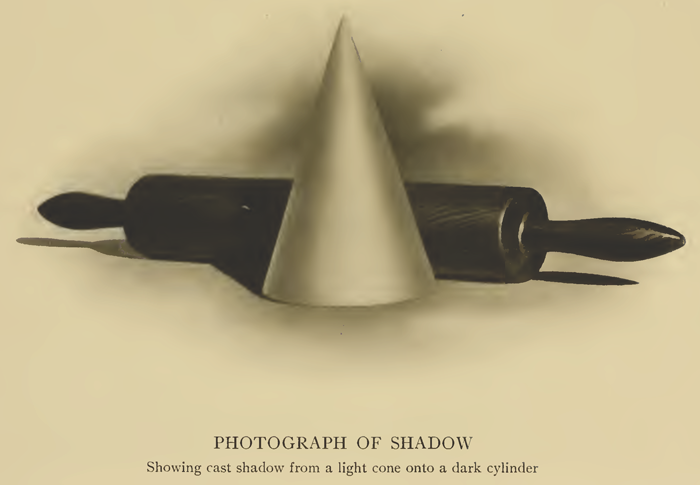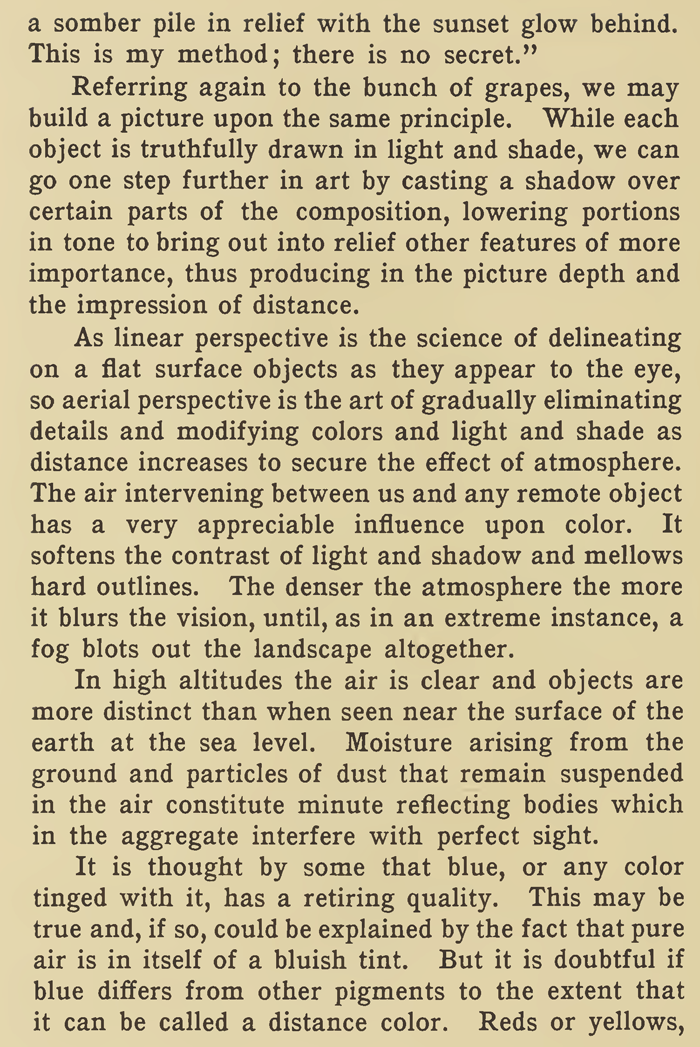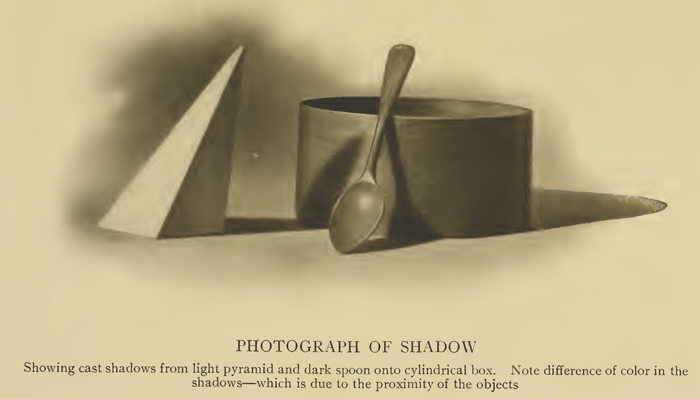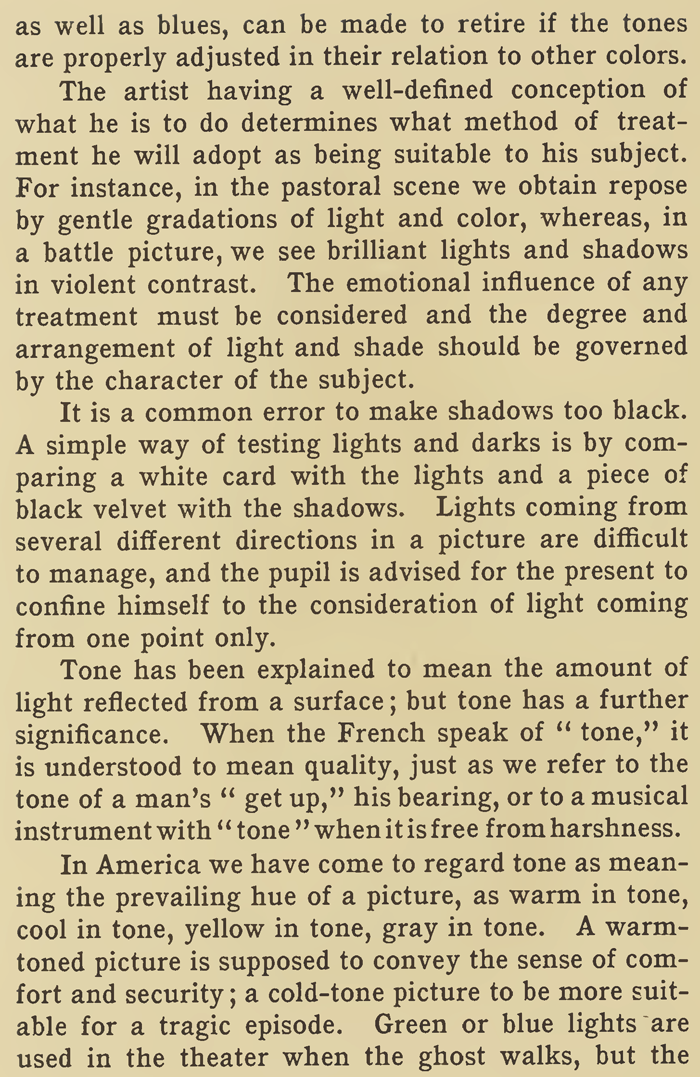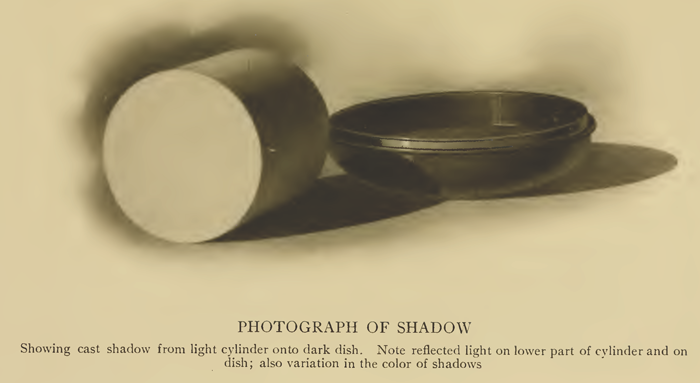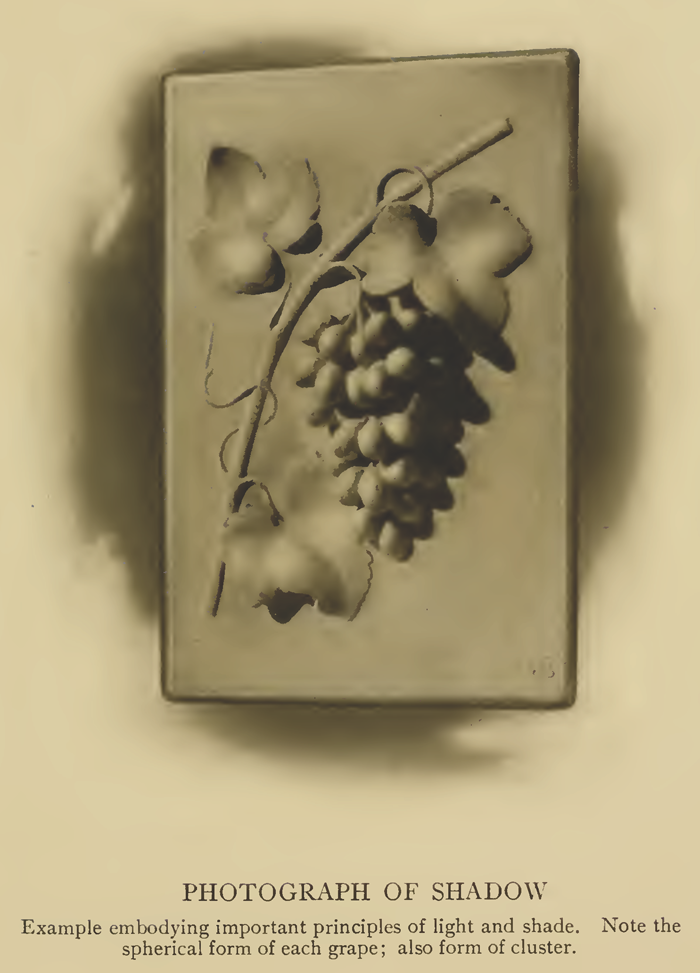Home > Directory of Drawing Lessons > How to Improve Your Drawings > Draw Lights & Shadows > Shading in Graduated Tones by Learning How to Draw Lights and Shadows
Shading in Graduated Tones by Learning How to Draw Lights and Shadows with the Following Drawing Lessons
|
|
The text above is made up of images, to copy some text, it is below. LIGHTS AND SHADOWSThe characteristic feature of graphic art is the representation of form and space upon a flat surface by means of light and shadow, rendered either in black and white or in color. The use of light and shade in painting dates from about the Thirteenth century, but the artists of that period rarely attempted more than the delineation of selected near-by objects. Rembrandt, the acknowledged master of light and shade, by the disposal of graduated tones, was the first to succeed in expressing distance as well as solid form. The beginner finds light and shade so closely associated with color that it is difficult to accurately judge one irrespective of the other without some knowledge of the principles which govern their relationship. The intensity of color depends upon light or the amount of illumination under which it is seen. Where the sunlight touches a red cloth the color is brilliant ; in the shadow it appears dull, yet we know the cloth to be the same red all over. It is the difference in the intensity of the red rays which causes the color to vary in appearance. These degrees of intensity are called the " tones " of red, of blue, of yellow or whatever color is meant, just as C natural is a tone in music. It may be in the higher octaves or in the lower, but always the note is C natural. We speak of a piece of music as pitched in a high key when it is arranged for high notes, or in a low key when arranged for the low notes. A picture painted in a high key is one where light tones prevail, and in a low key where dark tones prevail. A night scene would be in a low key ; a landscape in sunlight high in key. In a Claude Lorrain glass one sees how nature is lowered to a pitch within the possibilities of painting. If we paint a picture altogether in light tints or altogether in dark shades we do not utilize the entire scale of tones at our disposal, or if we do not take pure white paint for our highest light, and if our lowest color note is not absolute black, the full limit of the palette has not been reached. The key in which a picture is painted is not important, provided the proportion and relation of the lights and darks are right. While there are no rules that govern the exact amounts of light, middle tint and deep shadow which shall be used to make a picture agreeable, the artist must arrange and distribute them so as to secure a proper balance. Obscurity and heaviness are to be avoided in low-toned pictures, and to give variety to those painted in a high key restful shadows must be introduced. Indoor effects are softer than outdoor effects because the tones melt into one another without harsh contrast. " As smoke loses itself in the air, so are the lights and shadows to pass from one to the other without any apparent separation," is a maxim attributed to Leonardo da Vinci, and it is a valuable suggestion to the pupil. Nature is not violent in her effects except on rare occasions, and when high lights are brought into contact with strong darks in a picture the contrast should be made with care and deliberate intention. Everything, from the mountain range to the finest grain of sand, has form, revealed to the eye by light and shadow, regardless of its color. Light and shade make a grape round, and they also give form to the cluster as a whole. Light and shade make some parts of an object appear to come forward and other parts to recede. On the sphere, the cylinder, the human figure, or upon any curved surface, shadow separates from light gradually, but on angular surfaces light and shade separate abruptly. In considering light and shade, distinction should be made between natural shade and accidental shadow. Natural shade is the shade which is inseparably connected with every object reflecting light. Accidental shadow is the shadow which one object casts upon another object by the former being interposed between the latter and the light. An accidental shadow may be lighter or it may be darker than the object casting the shadow. If the object casting the shadow be of the same color as the object upon which the shadow falls, then the shadow itself is darker than the shaded side of the object casting it, and it is still darker if it falls on an object darker than itself. When an object casts its shadow on another object of lighter color then the shadow is lighter than the shaded side of the object casting the shadow. However, this is not an invariable rule, as shadow is also affected by reflected light. Cast shadows do not indicate the forms of the objects casting them, but conform to the surface of the one that receives them. Without the aid of the cast shadow it is often difficult to explain or comprehend a surface. Cast shadows have well-defined edges, no matter whether the objects casting them are curved or angular. All cast shadows are darkest when closest to the object casting them, and they are lightest when most distant from that object. The lights on objects receiving cast shadows appear brightest where they are in immediate contact with the darkest of these shadows. The color of an object is also influenced by the color reflected upon it from some other object. An object in direct sunlight appears lighter in color than it does indoors, and the real color of an object is more easily determined in diffused light than when illuminated by direct rays. Cast shadows out of doors are really lighter than cast shadows indoors, although they may not appear so. It is contrast which gives the brilliancy of effect. Claude Monet, the great " luminarist," who painted " trees that sway in the breeze, clouds that scud across the sky and water that ripples over the stones," invariably refused to teach. " Go to nature ; paint what you see," said he to those who wanted to learn his method. " There is no trick, but I tell you paint that tower forty times, as I have done, to learn the effects of light. They are changing constantly. Monday morning the church was violet gray, in the evening a rose color, the next day blue, at one time a light mass against a darker sky, again a somber pile in relief with the sunset glow behind. This is my method ; there is no secret." Referring again to the bunch of grapes, we may build a picture upon the same principle. While each object is truthfully drawn in light and shade, we can go one step further in art by casting a shadow over certain parts of the composition, lowering portions in tone to bring out into relief other features of more importance, thus producing in the picture depth and the impression of distance. In high altitudes the air is clear and objects are more distinct than when seen near the surface of the earth at the sea level. Moisture arising from the ground and particles of dust that remain suspended in the air constitute minute reflecting bodies which in the aggregate interfere with perfect sight. It is thought by some that blue, or any color tinged with it, has a retiring quality. This may be true and, if so, could be explained by the fact that pure air is in itself of a bluish tint. But it is doubtful if blue differs from other pigments to the extent that it can be called a distance color. Reds or yellows, as well as blues, can be made to retire if the tones are properly adjusted in their relation to other colors. The artist having a well-defined conception of what he is to do determines what method of treatment he will adopt as being suitable to his subject. For instance, in the pastoral scene we obtain repose by gentle gradations of light and color, whereas, in a battle picture, we see brilliant lights and shadows in violent contrast. The emotional influence of any treatment must be considered and the degree and arrangement of light and shade should be governed by the character of the subject. It is a common error to make shadows too black. A simple way of testing lights and darks is by comparing a white card with the lights and a piece of black velvet with the shadows. Lights coming from several different directions in a picture are difficult to manage, and the pupil is advised for the present to confine himself to the consideration of light coming from one point only. Tone has been explained to mean the amount of light reflected from a surface ; but tone has a further significance. When the French speak of " tone," it is understood to mean quality, just as we refer to the tone of a man's " get up," his bearing, or to a musical instrument with " tone " when it is free from harshness. In America we have come to regard tone as meaning the prevailing hue of a picture, as warm in tone, cool in tone, yellow in tone, gray in tone. A warm-toned picture is supposed to convey the sense of comfort and security ; a cold-tone picture to be more suitable for a tragic episode. Green or blue lights are used in the theater when the ghost walks, but the breakfast scene is flooded with warm light. Tone is not monochrome, but a combination of all colors tinged with one complexion. For instance, the rays of the sun percolating through the haze of a misty morning, cast a glow over the landscape and give it a rosy tone. On the other hand a green shade on a lamp may produce an unpleasant tone. |
Privacy Policy ...... Contact Us





